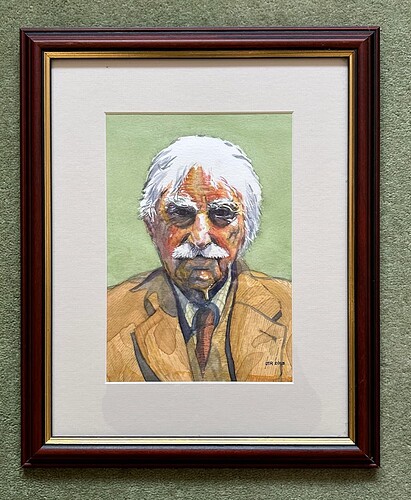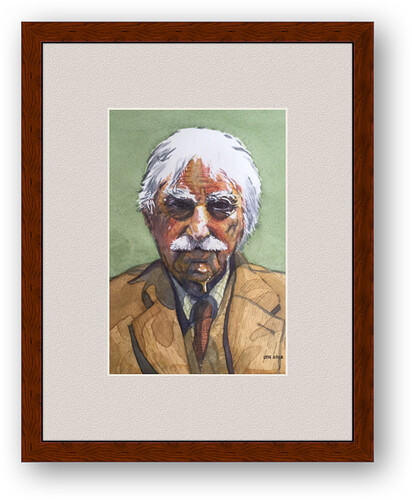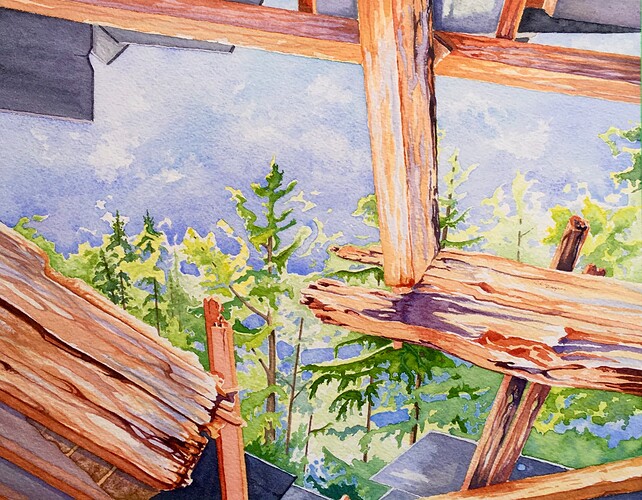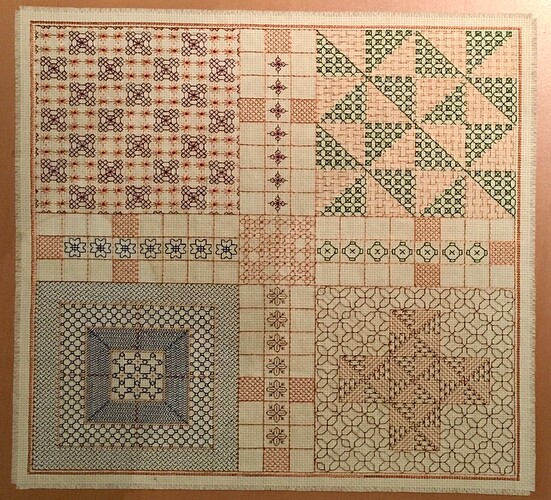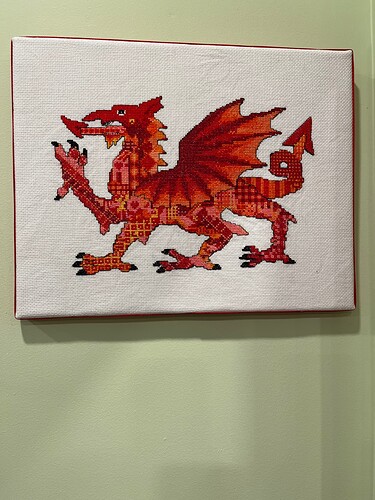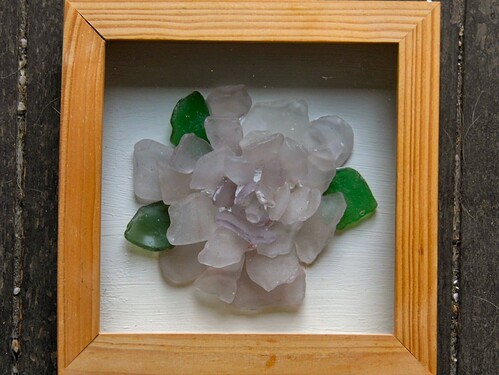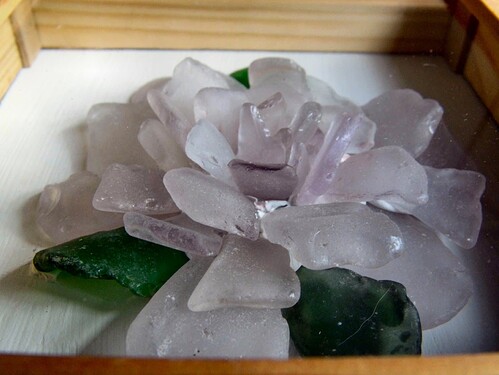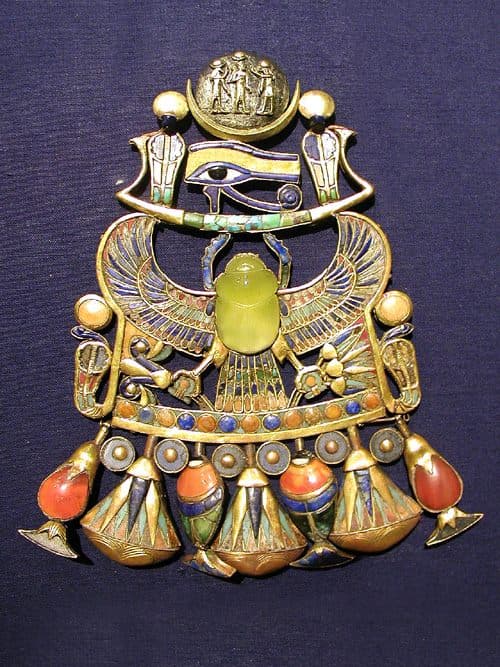You modestly call your work just ‘assemblages’, but there’s real artistry in being able to recognise and appreciate the beauty in the natural world that surrounds us. That’s a gift.
Thank you, that’s really kind ![]()
A watercolour portrait I did back in 2015 of my favourite Welsh artist. Probably the greatest painter of Welsh sheep farmers and the bleak, rugged beauty of the mountains of North Wales. Sadly died 2006. You might recognise him from his distinctive handlebar moustache. Chose the carpet to match the green wash background!![]()
Well, well! Believe it or not, that was the chap who inspired me to start glueing my pieces together instead of keeping them in a box! (after I spotted his ones on the Amgueddfa Cymru website!)
You’ve captured a lovely likeness of him there.
My mother had a friend whose mother was a GP in N London and he lodged with the family during (some of?) the years he was senior art teacher at Highgate School, in term time. Wales during the holidays, of course.
This is splendid Jason, you have certainly mastered very different styles and subjects. What do you do with all your pieces? They are certainly of high quality, so I wondered if you ever sell them—you could!
Most of my watercolours are stored flat in sealed plastic ‘crystelex’ envelopes. However, a photographer friend who used to show his work, offered me 8 lovely large wooden frames. I took them to a framer who cut them and the glass down and prepared mats for some of my better efforts. He charged next to nothing, bless him, but the frames transformed the paintings ![]() . Now I need carpet to match too—good thinking
. Now I need carpet to match too—good thinking ![]()
![]()
![]()
You raise interesting practical questions Marilyn. When I did my watercolour of Sir Kyffin Williams, back in 2015, I was young and naive! I’ve long since abandoned the effort and expense of physically framing the stuff I do myself and nowadays tend to use an app called FrameBuilder when I want to try and ‘dignify’ my paintings (I’ve just quickly knocked together such a frame for you to see as an example). I’ve never tried to sell anything and I don’t intend to start now, but I do wonder where other artists find the money and cupboard or wall space to physically frame, store and display everything they do. These days, I only really paint, sculpt and frame things digitally. Everything’s conveniently archived on my iPad, or very occasionally posted on YouTube, or on online digital artist community groups (or recently shared here!), with the exception of a few things I sometimes print off as birthday cards and inflict on long-suffering family members and friends. Advanced age, mobility constraints and the experience of having once spent a couple of months in hospital have taught me how having an iPad can be a real creative lifeline. Call me lazy, but I have no clay to wash off my hands and no brushes or spillages to clean up (I didn’t want to trouble the nurses!). I don’t even need to get out of bed. As long as I can twitch my fingers, hold an Apple Pencil and keep my iPad charged, I can carry on painting.
That’s a fascinating recollection. Given the challenges Kyffin had with his health and upbringing and his relationship with his parents (his mother was apparently, and very weirdly, ‘anti-Welsh’) his achievements as an artist and recorder of Welsh rural life and landscapes are all the more impressive. Much copied, but never equalled.
You are such a great mentor Jason—sharing ideas and discoveries like the FrameBuilder app which does a great job ‘dignifying’ pieces. That’s a must for me to try this week. Similarly your story makes me want to persist with learning how to make art on the iPad.
Many years ago, it was a dear SSiW friend from N. Wales who told me about the very first iPad Pro with its pencil which I continue to use. Until then, I had never used any Apple products. I found it stopped me from wrecking watercolours by saving unfinished paintings (with a ‘problem’ area) in Procreate, then trying out some options before finishing the piece.
I don’t sell my work either, but, like you, I make cards, and in recent years created calendars for friends who are all very gracious about this annual ‘tradition’ now. For the latter, I use VistaPrint that does a great job, but maybe you make e-calendars instead.
Thank you for sharing both your artwork and tips which certainly will help me, and I hope other followers of this thread.
Cheers,
Mari
‘A room with a view’—actually it’s an old disused stable with a broken slate roof. It qualifies as a Welsh scene because it is in St. Nicholas, on the Vale of Glamorgan.
Living just outside Lichfield, Staffordshire, means I’m near to one of those English cities that has a name in Welsh. Lichfield = Caerlwytgoed. A few years ago, I had a crack at doing a watercolour of the three-spired cathedral viewed from across Stowe Pool.
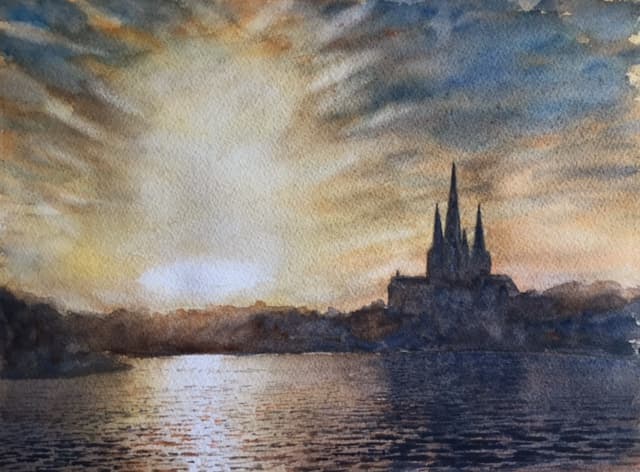
Gwych! This is stunning Jason—quite etherial, capturing both the beauty and mystery, creating a sense of wonder and awe. I love it, Diolch yn fawr iawn.
Rather Turneresque, if I may say so! Lovely!
I used traditional embroidery stitches for this sampler combining five medieval board games. Can you name any? Every played them?
Beautiful stitching Marilyn! I love it! I have recently y learned cross stitch and have been playing around with it.
This was the pattern I learned on, “patchwork dragon” by Michelle Learner, another Cardiff girl Marilyn! Now hanging in my sewing room.
That’s lovely Mari - very effective. I’ve no clue what the boards are, but what a wonderful idea.
As well as stones, I pick up sea-glass from the shore. I do use it with stones, but I also use it on its own - here’s an example. Being an early attempt (and a bit fiddly to do before the glue set!), it’s a bit messy, but I’m still fairly pleased with it.
I was at Knighton on Wednesday, courtesy of the Heart of Wales line that’s free to Welsh bus pass holders in the winter months. There’s an observatory there. Who knew? They specialise in Near Earth Objects, mostly asteroids and meteors. The gent running the tour told us about a meteorite landing in the desert around what is now Libya/Egypt, and turned a huge area of sand into glass, some of it pure enough to end up in Tutankhamun’s breast plate.
Maybe you know Ludo, but two of the other games are Nine Men’s Morris, and Fox and Geese. I wonder if anyone can guess the last two.
